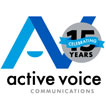
You’re constantly creating web content for product pages, sales promotions and the company blog, but when was the last time you really optimized your homepage? We’re not just talking about SEO. Does your homepage engage users? Does it provide clear calls to action? Is the information up to date?
Although homepages are no longer necessarily the first page users will see, it remains an important organizational tool and introduction to your business. So, how do you go about making sure that your homepage is truly successful? Follow these steps.
1. Establish your goal.
Just like your website as a whole, your homepage should have a goal. This means that if the objective of your site is to sell products to consumers, your homepage should make it immediately clear what you sell and how to buy.
Compare the homepages of online retailer Wayfair and “eatertainment” company TopGolf. Wayfair makes it obvious they want you to start shopping right away by listing the categories of their wares right at eye level. TopGolf, on the other hand, makes it clear they want you to come to play by putting “Plan a visit” front and center.
Whether your goal is to generate leads or get patients to schedule an appointment, that should be evident while you’re planning your homepage.
2. Identify 3 to 5 messages to communicate.
Keeping your main goal in mind, develop the messaging you wish to convey to visitors. We recommend sticking to no more than three to five points. More than that and your homepage could become cluttered and difficult to follow.
3. Collaborate on the design.
Yes, the words on your homepage are important. But just as important are the visuals and aesthetic. Before you begin writing, it’s helpful to have at least a rough design in place. That way, you’ll know exactly how much copy to provide and in what format (headlines, calls to action, teasers, body copy, etc.).
Work closely with your design team in creating a layout that will best serve your audience. What will draw site visitors in? How should the page be structured to make it easy for your audience to navigate? What functionality will the page have?
4. Write.
Now you are ready to write your homepage content. This is where having the design template and word counts will come in handy, but typically, short blurbs are best.
As always, think about your audience’s needs. What matters to them? It’s not always the same as what matters to you. And try not to over-complicate your copy. Err more on the side of straightforward unless your brand has a standout personality (a la Dutch Bros or Dollar Shave Club). Of course, you’ll also need to be mindful of using SEO best practices where appropriate. But like we always say, write first for your readers and second for SEO.
5. Make sure CTAs are clear.
Now’s a good time to revisit your main goal. What do you want people to do when they land on your homepage? Whether you want them to buy something, request a demo, schedule an appointment, register for a class, download your app or sign up for your newsletter, your homepage should help your audience continue their journey with you. Make sure your calls to action are clear and stand out visually.
6. Track and tweak as necessary.
Your homepage is up, and *chef’s kiss,* it looks fabulous. But you’re not done yet. The key to an effective homepage is to test it, tweak it and repeat.
Look at your analytics. Is your homepage doing what it’s supposed to do? Are people taking the actions you intend? If not, figure out why. Is the design or the copy confusing? Are you attracting the wrong audience in the first place? There are countless reasons why your homepage might not be working. Continue to test and revise until it does.
Homepage writing checklist
Your homepage is often the best chance you’ll get to make a first impression. Plan a strategic and effective homepage by following these steps:
- Determine what it is you want people to accomplish when they get to your homepage.
- Outline three to five key messages you plan to convey.
- Work with your designer to create a layout that will support your goal.
- Write your copy according to the design template.
- Ensure your calls to action are clear and concise.
- Test, tweak, repeat.
